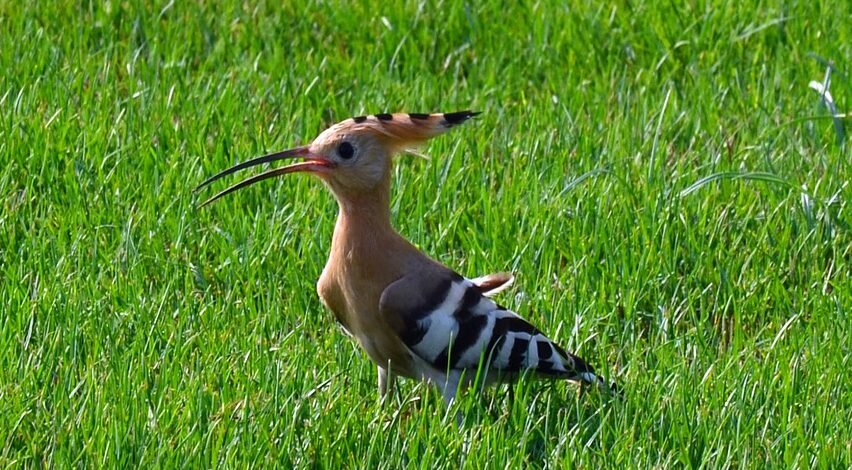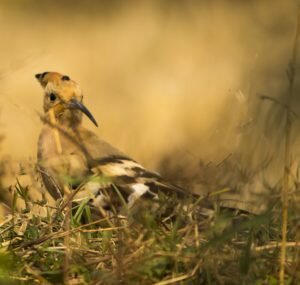
Their crests and unusual coloration are almost clown like, but ancient Egyptians as well as the ancients of Greece revered them. The Greeks and Egyptians believed that the younger adults of this species cared for their aged parents. According to myth, younger ones take care of their old mothers and fathers and keep them warm. The playwright Aristophanes cast a hoopoe as the main character in his political satire The Birds, performed for the first time in 414 B. C. at the city of Dionysia. The phenomenal Italian engineer, mathematician, author and artist Leonardo da Vinci wrote of the behavior of the younger adults toward their elders, stating that younger hoopoes “cherish them and feed them, plucking out the old and shabby feathers with their beaks and by means of certain herbs, restoring their sight, so that they return to a state of prosperity”.

These birds thrive in olive groves and orchards throughout South Africa.
Along the Garden Route they wake people up in the morning with their distinctive “oop-oop-oop” calls. In flight hoopoes look like gigantic orange and black butterflies because the birds nearly close the wings upon themselves during one wing stroke, as butterflies sometimes do.
Where does the hoopoe fit into the grand scheme of bird life?
It’s the only living member of its family Upupidae. The scientific name for the southern African subspecies is Upupaepopsafricana. Its nearest relatives are the hornbills. Hoopoes occur as far north in the northern hemisphere as Great Britain and as far south in the southern hemisphere as the Cape of Good Hope. The northern populations are seasonal visitors and occasional breeders. The International Union for the Conservation of Nature’s (IUCN) Red List classes them as species of “least concern”.
The hoopoe can thrive in gardens and orchards of South Africa and in the Himalayas of India. The body length is from 26 to 32 centimeters and adult

Hoopoes also occur in Eurasia.
birds weigh anywhere from 47 to 89 grams.That beak is adapted for opening while the bird is foraging in the soil. It uses strong muscles in the jaw for prying loose large insects. The South African hoopoe is a pinkish orange and has black tips on the crest.
It likes to “sunbathe” on the ground, spreading its wings and then tilting its head back. The bird looks for all the world like it is ill or hurt when it is sunbathing. The average lifespan of a hoopoe is approximately nine years. The adults do not mate for life, although a hoopoe’s mate is its constant companion.
Hoopoes nest in holes in trees, in cliffs and in openings in walls. The nest is lined with feathers, wool and soft vegetation. They lay from four to seven greenish or yellowish eggs. The mother and babies possess a gland on the dorsal end of their bodies that can squirt a stream of very foul material right into the face of a cat or a raptor. The secretions cease when the fledglings leave the nest.
Yes, the hoopoe is an odd bird indeed and its song announces spring!
